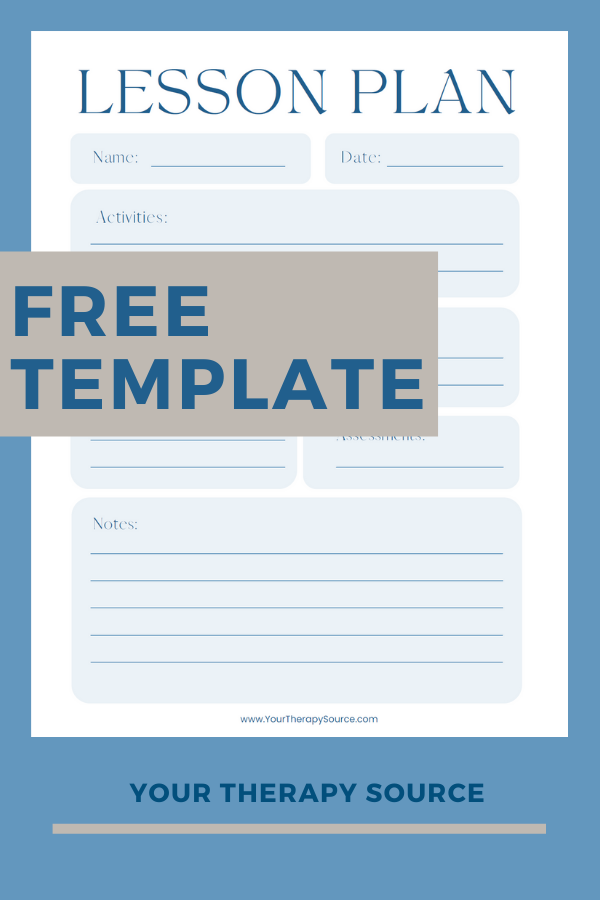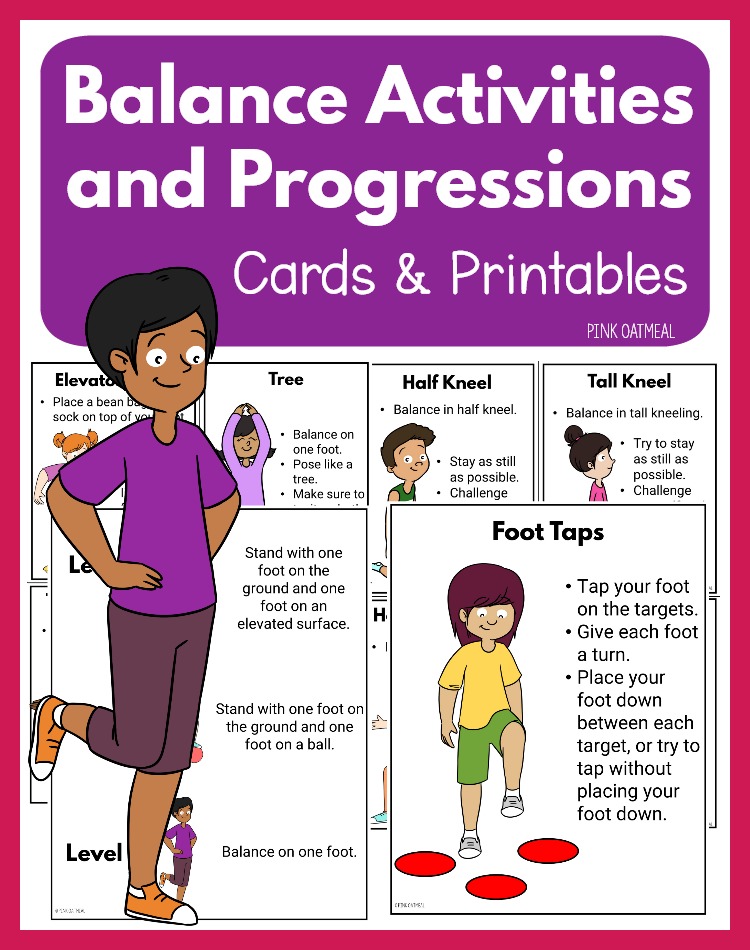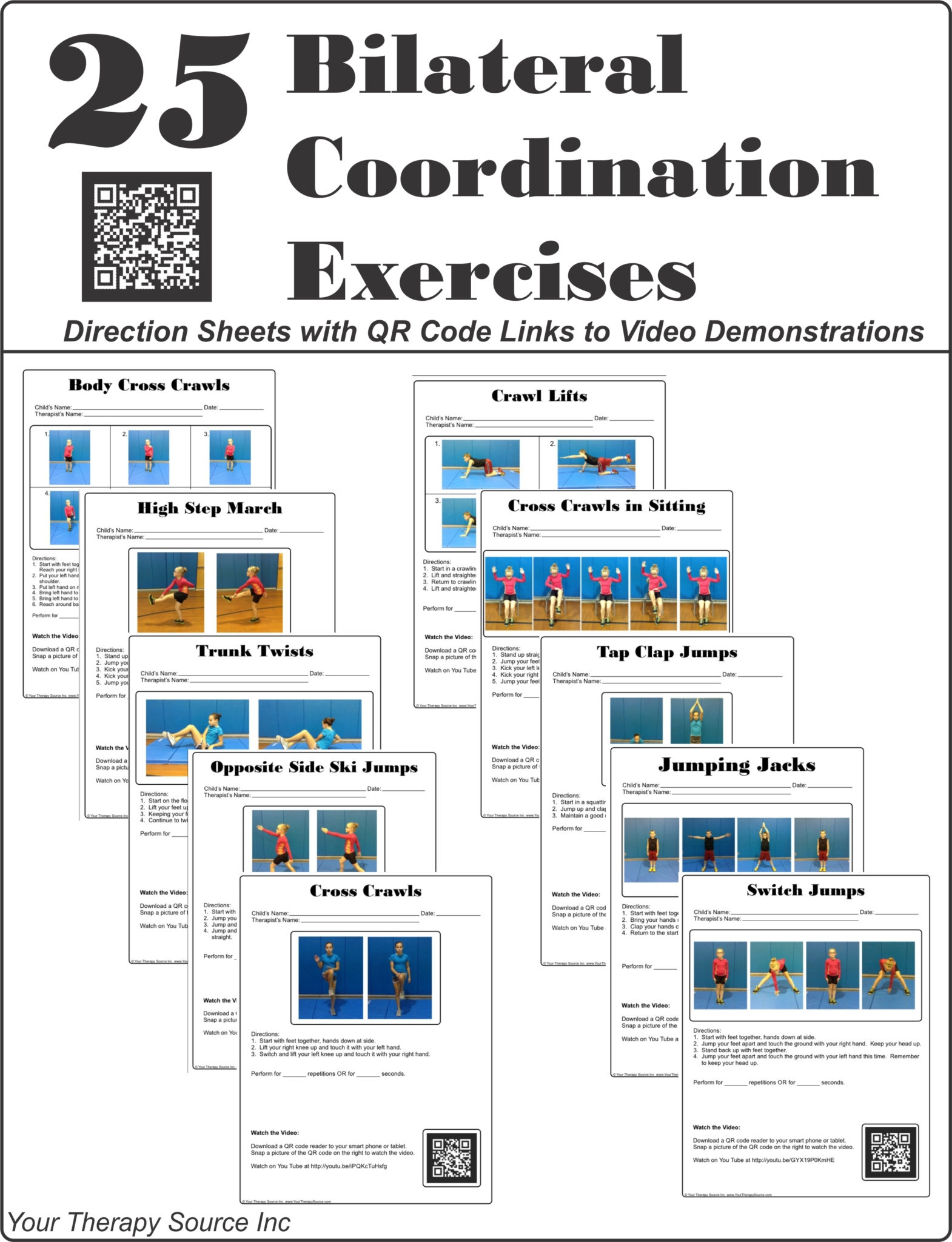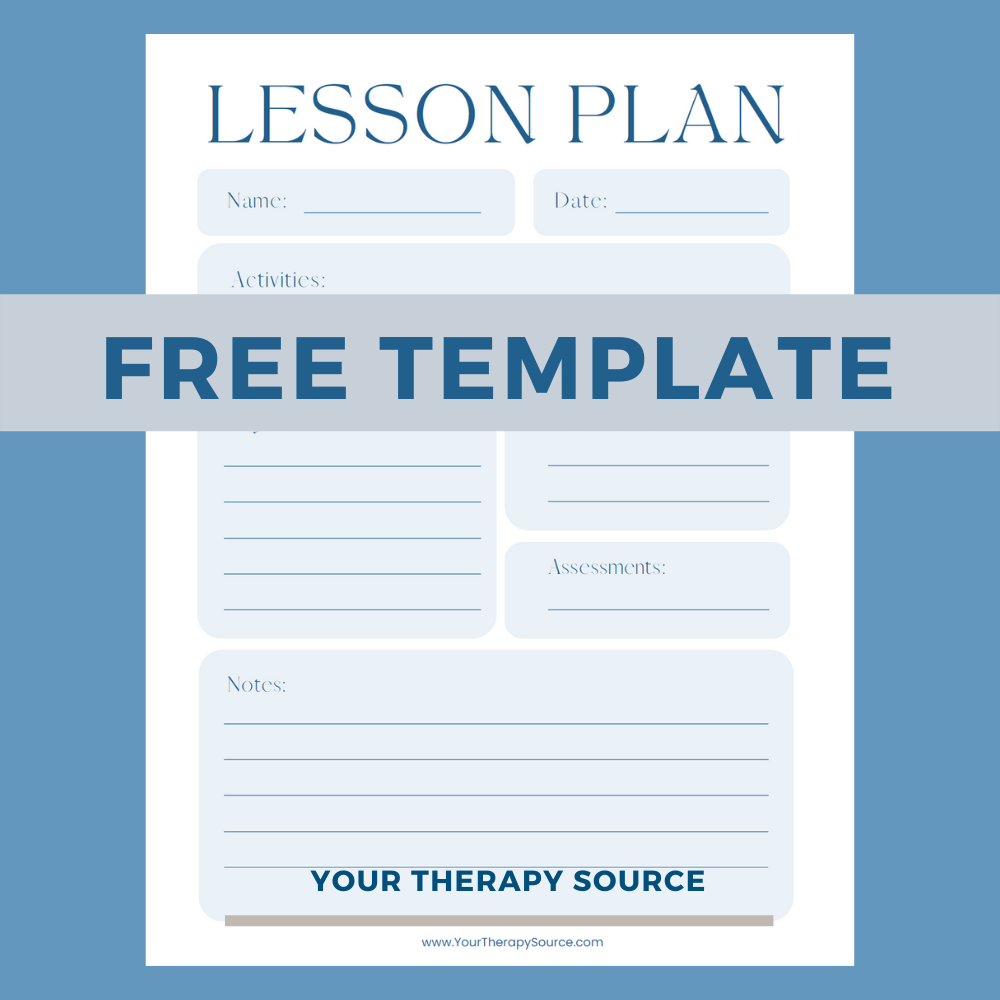Lesson Plans for Special Education

If you work with special education students, you know that coming up with lesson plans can be a challenge and time-consuming. You want to make sure that your students are engaged and learning, but it can be difficult to find the right balance. Being prepared is huge in special education because you always need a backup plan!
Here are some tips and ideas for creating lesson plans for special education whether you are a teacher, occupational therapy provider, physical therapy provider, speech therapy provider, or anyone who works with students!
LESSON PLANS – A TOOL FOR EDUCATORS
Special education lesson plans are important because they provide educators with a road map for instruction. A well-written lesson plan will:
- take into account the abilities and needs of each individual learner.
- will be designed to help them meet specific learning objectives.
- address IEP goals.
While lesson plans are not the end-all and be-all of teaching, they certainly provide an effective tool to get educators on the right track for meeting each student’s goals.

School and Home Communication Forms for Therapists
WRITING LESSON PLANS FOR SPECIAL EDUCATION
When writing lesson plans for special education students, it is important to keep the following in mind:
-Start by assessing your students’ needs and abilities. What do they already know? What do they need to learn? Do they already understand the vocabulary and terminology for this lesson? What are their IEP goals?
-Make sure your lesson plans are achievable. You don’t want to set your students up for failure by giving them objectives that are too difficult to meet. Think about what vocabulary and prior knowledge of your particular group of students.
-Be clear and concise in your lesson plans. This will help you stay on track while teaching and will also make it easier for students to understand what is expected of them.
-Differentiate your instruction. This means tailoring your lesson plans, and making modifications to meet the unique and special needs of each student. Remember, no two students are alike!
-Think about the delivery of your instruction. Direct instruction can be good for certain content areas and lessons, but sometimes special education teachers find that students increase their comprehension and understanding when they have to figure out some pieces on their own.
-Keep your lesson plans engaging. The more student engagement you can foster, the more motivation they will have to learn.
-Be flexible. Things will inevitably come up during the lesson that you didn’t plan for. Routines are important, but also be prepared to adjust on the fly and go with the flow.
-Consider your students’ IEP goals. Any activities you plan or instructional decisions you make, should keep the student’s needs and learning goals in mind to the maximum extent. They might all have different requirements, so awareness is key.
TIPS FOR CREATING ENGAGING LESSON PLANS FOR SPECIAL EDUCATION
Now that we’ve gone over some of the basics of writing lesson plans for special education students, let’s talk about how to make them engaging. Here are a few tips:
-Include a variety of activities on a regular basis. This will ensure that all students are engaged and involved in the lesson.
-Make sure the activities are hands-on. Special education students often learn best through experience, so try to incorporate as many opportunities for hands-on learning as possible.
-Utilize technology. Technology can be a great way to engage special education students in the lesson. Just be sure to use age-appropriate tools and applications.
-Incorporate movement. Movement is key for special education students, as it helps them stay focused and engaged. Try to include some movement breaks throughout the lesson.
-Use props, visuals and visual cues. Props and visuals are always a hit with special education students! They help to bring the lesson to life and can make it more memorable for students.
-Have students work in small groups. When students work with their peers, they can learn from each other, and also foster better social skills.

Brain Breaks for Kids – Classroom or Online Learning Tool
MATERIALS NEEDED FOR CREATING LESSON PLANS
Here is a list of potential materials you’ll need for students receiving special education services. Some suggested classroom resources:
-A whiteboard or chalkboard
-Markers or chalk
-A projector (if you plan on using technology in your lesson)
-Computers or tablets (if you plan on using technology in your lesson)
-A variety of props and visuals
-A bell or timer
-Brain breaks
-Sticky notes
USING TECHNOLOGY TO CREATE LESSON PLANS FOR SPECIAL EDUCATION
When it comes to technology, there are endless possibilities. Here are a few ideas to get you started that can be good as special education resources, or even general education resources.
-Google Docs or Microsoft Word: These programs can be used for writing lesson plans, tracking student progress, and more.
-Keynote or PowerPoint: These programs can be used for presenting information in a visually appealing way.
-Screencasting: Screencasting is a great way to record your lesson so that you can review it later or share it with others.
LESSON PLANS FOR OCCUPATIONAL THERAPY
If you’re an OT provider looking for lesson plans specifically for students who receive occupational therapy, here is an overview to get you started. First and foremost remember to base your lesson plans on your student’s IEP goals.
-Fine motor skills: Activities that focus on developing fine motor skills, such as cutting with scissors or using a fork and spoon.
-Gross motor skills: Activities that focus on developing gross motor skills, such as hopping on one foot or throwing a ball.
– Handwriting skills: Activities that focus on letter identification, letter placement, letter sizing, speed, or fluency.
-Sensory processing: Activities that focus on helping students develop their sensory processing skills, such proprioceptive or vestibular input to prep your students for tabletop activities.
-Visual perception: Activities that focus on helping students develop their visual perception skills, such as visual scanning, visual motor, visual discrimination, visual-spatial, skills, etc. For example, putting together a puzzle or completing a maze.
-Self-care skills: Activities that focus on teaching students self-care and life skills, such as zipping their coat or tying their shoes.

Dysgraphia Handwriting Intervention – Occupational Therapy Tools A: Formations
LESSON PLANS FOR PHYSICAL THERAPY
If you’re a school-based physical therapist looking for lesson plans specifically your students, here are a few ideas to get you started:
-Balance and coordination: Support participation in physical education or recess such as activities that focus on improving balance and coordination, such as walking heel-to-toe or jumping jacks.
-Strength and flexibility: Activities that focus on building strength and flexibility, such as squats or lunges.
-Mobility: Activities that focus on improving mobility, such as navigating the classroom, playground, or walking up and downstairs.
-Therapeutic exercises: A variety of therapeutic exercises that can be tailored to the needs of your students to help them develop the strength or flexibility needed to complete functional skills at school.
-Movement activities for special occasions: Ideas for activities to celebrate special holidays or seasons.

Balance Exercises for Kids
EXAMPLE OF A PHYSICAL THERAPY LESSON PLAN
Date(s) of Lesson(s):
Therapist and Title:
Student(s) or Classroom Group:
Goals Addressed:
- muscle strengthening and bilateral coordination practice
- following three-step directions
- understanding left from right – visual-spatial skill practice
- jumping over an object
Materials Needed:
- large ball
- hula hoop
- cones
- cuff weights
Directions:
1. Begin with muscle strengthening and proprioceptive activities on the mat:
- quadruped: cat and camel stretches, 4 point extension in quad 5x each leg and arm, downward dog x 5 seconds, prone extension hold for 10 seconds repeat if able
- abdominal exercises: egg roll – grab knees to chest and rock onto the back and up to sitting. Repeat 10x, abdominal crunches
- Lower abdominal exercises: on back, hips at 90 degrees, slowly lift legs off of floor (knees straight if possible). Repeat 10x and additional sets if able.
- Bridges – knees bent, feet on floor lift hips up 10X + additional sets if able
2. Progress to lower extremity strengthening:
- perform 10 squats against wall
- squat and hold wall sit for 20 seconds
3. Place cuff weights on hula hoop. Put cones around room. Holding the weighted hula hoop with two hands try to throw it around the cones. Try holding the weighted hula hoop on a yard stick perpendicular to the floor and drop the hoop over the cones.
4. Holding the weighted hula hoop practice holding it to the left, right, high and low. Try holding the hoop and climbing through the hoop.
5. Create an obstacle course with a few chairs or cones. The child can negotiate the obstacle course rolling the hula hoop through the course.
6. Rest the hula hoop on two small blocks, upside down plastic cups or hard cover books – practice jumping in and out of hoop without knocking it over.
Assessment:
| # of trials correct | |
| Able to follow 3 steps to complete an obstacle course | |
| Able to follow left and right directions with the hula hoop | |
| Able to demonstrate bilateral coordination by holding hula hoop with two hands | |
| Able to jump over hoop with knocking it over |
Modifications:
Play music to work out with the weighted hula hoops.
Play Simon Says with different hula hoop motions.
If the child can not roll the hula hoop through the obstacle course, try negotiating the obstacle course by holding the hula hoop at waist level. The object is not to knock into any obstacles with the large hoop to encourage body awareness and motor planning. Vary the height of the hoop resting on the blocks. If the child can not jump in and out of the hoop try stepping in and out of the hoop without knocking it off the blocks.

25+ Bilateral Coordination Exercises
USING YOUR EXPERIENCE TO GUIDE THE EDUCATION OF YOUR STUDENTS
As you can see, there are many different lesson plans that you can use for your special education students. The most important thing is to use your experience and knowledge to guide the education program of your students. Every student is unique and will learn in their own way. By using a variety of lesson plans, you’ll be able to cater to the needs of each individual student. By using your intuition and educator experience, you will be able to carry out these lesson plans in a way that benefits your students the most.
When creating a lesson plan for special education students, it is important for educators to keep in mind the purpose of these plans. The goal is to help these students learn and grow in their abilities. Whether you start with free lesson plans online, or start from scratch, you can create engaging and effective lesson plans that will benefit your students of all grades and grade levels.
Remember to always tailor your plans to meet each student’s individual needs, and be patient as you work with them. It may take some time, but with hard work and dedication, you can find the perfect fit for lessons that work well for your students. This in turn will help your special education students thrive in the classroom.



